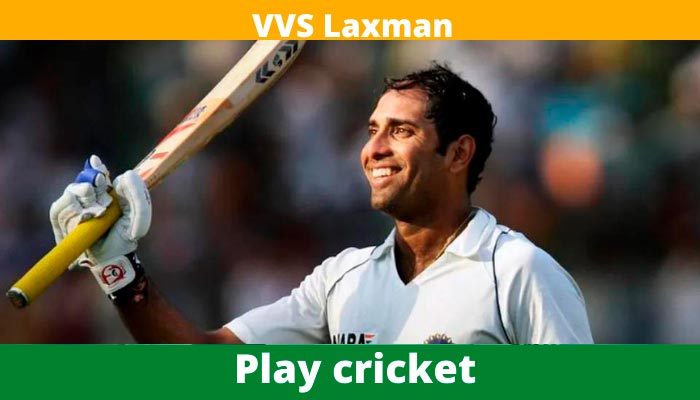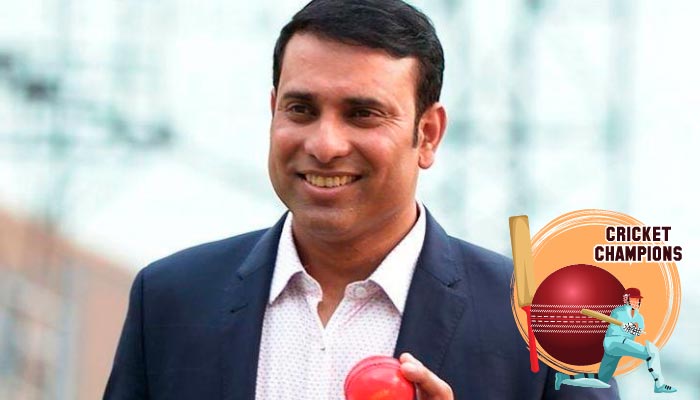
VVS Laxman, who can forget this great batsman from India who left his mark on the World Cricket. Vangipurapu Venkata Sai Laxman, or VVS Laxman, is a former Indian cricketer who played in the middle order and is known for his elegant batting. He also has tried commentary and roles such as coaching the team and mentoring it. Thus after retiring from cricket, he still is contributing to shaping the future talent of Indian cricket. So, if you are a fan of VVS Laxman, but do not know his story or how he became famous cricketer, keep reading below.

VVS Laxman was born in November 1974 and had an interest in cricket from a very young age. But he continued to study in medical college but eventually decided to pursue cricket as a career. VVS Laxman was first called up for their domestic cricket debut in 1992 when Hyderabad was playing against Punjab. The first couple of years at the domestic level was devastating for Laxman as he failed to impress the selectors with his batting and, as a result, did not play enough matches for Hyderabad during his initial phase of domestic cricket. But the breakthrough came in the 1994 Ranji tournament season when he made above 500 runs in five matches.
Later he did well in zonal tournaments, which resulted in his call for the national youth team. Thus by showing his potential for batting at the school and state level, he earned him a spot on the India U-19 team. He made 88 runs in his debut match to start his professional youth career. Then later, he also helped his team win the series by scoring above 200 runs in both innings of the match.

VVS Laxman wore an Indian jersey for the first time when he played against South Africa in 1996. He played well and, in fact, scored a fifty in his debut match, but for the rest of the matches, he could not leave the mark. He took some time to adjust to the Indian national team, and finally, in 1998, against Australia, he got back his form and scored 97 runs in the first innings. His run contribution helped the Indian team to win the match. But his career was still going through many ups and downs when he could not play a single match on his next tour despite being in the squad.
VVS Laxman got his form and went to winning matches for India after 2004. For the next several years, he became the permanent batsman of the Indian team and was responsible for winning several tournaments and series. If you talk about his stat in International cricket, you will notice that he played 134 test matches in which he has scored over 8700 runs and has a top score of 271. He played 86 ODIs for India in his entire career and scored above 2300 runs. Thus you could see he was more consistent in scoring in test matches than in the ODIs and people were fans of his elegant batting and shots.
IPL came very late in the career of VVS Laxman, but he played IPL for Deccan Chargers in the IPL 2008. They bought VVS Laxman and gave him the title of Icon player because of his contribution to Indian cricket and made him the captain of Deccan Chargers. But the first season of the IPL was a nightmare for VVS Laxman as his team was not doing great, and he left the captaincy to improve the team’s performance.
Laxman struggled with the T-20 format and could not perform as expected, and they played very few matches in the first three seasons with Deccan Chargers. In the 2011 IPL auction, he was bought by the Kochi Tuskers Kerala, but unfortunately, an injury made him miss the first few matches of the IPL 2011. Thus 2011 was the last year he played IPL, as next year, no franchise was interested in buying him. Thus he took the retirement in 2012 but continues to play a few matches in domestic cricket.After his retirement, VVS Laxman became part of the Sunrisers Hyderabad franchise of the IPL as a mentor and began to share his experience with the team players to help them win titles. He also has been on the team’s coaching staff as he also served as a coach, but it was temporary. Following IPL 2022, VVS Laxman decides to quit his role of mentoring the Sunrisers team and start a new journey with some bigger responsibilities, such as becoming the coach of the Indian youth team and head of the NCA.